BACK TO finale_winnerS
AYDA Designer of the Year
MAYUNGAN TEH
MAYUNGAN TEH; HOUSE OF LIFE The global world is currently facing deep uncertainty due to the West War and Trade War which have had a massive impact on the stability of international trade where there has been a significant decline in economic growth which burdens world export-import contributors, including Asia. The plantation sector, especially the […]

MAYUNGAN TEH; HOUSE OF LIFE
The global world is currently facing deep uncertainty due to the West War and Trade War which have had a massive impact on the stability of international trade where there has been a significant decline in economic growth which burdens world export-import contributors, including Asia. The plantation sector, especially the tea commodity, is the most affected sub-sector considering that is an important commodity and its existence is very broad and deep and has a close influence on the economy, culture and even health. This downturn has triggered severe social and economic inequality among world tea farmers, 70% of whom are small farmers in developing countries. My country, Indonesia, is one of the largest tea exporters in the world. However, the current phenomenon has resulted in inequality among tea farmers, especially Indonesia, all of whom live in remote villages and has become a very important problem and even world attention. And what I telling you now is about life in a remote village that produces tea leaves with sufficient quality and the people who initiated it. Antapan Mayungan, a small village in the hills of northern Bali with poor accessibility, sanitation and a crisis in the quality of human resources. The village community depends on nature and works on local tea plantations that are initiated together. In a day, the village community only produces 20-40 kg of raw tea leaves and only sell raw tea leaves at a low price and with mediocre quality. This is due to the lack of facilities and sufficient knowledge in cultivating and processing tea leaves. Apparently, tea continues to be a popular and in demand drink throughout the world because of its health benefits which then drives the rapid demand for tea in the global market. This should be a great opportunity for tea farmers, especially in Mayungan, in order to improve their standard of living and economy, and if only they could sell tea that has gone through a better processing process and quality, of course in the current conditions they can still sell or export tea even at a price twice as high as before.
Departing from the need for community welfare and global health, inspired me to design Mayungan Teh. The purpose of this design is to realize facilities that help improve the welfare of the community in cultivating and supporting the potential for good tea seed growth so that it can create new quality standards that are able to compete in the global market while maintaining its locality and essence as a cultural identity.
With the concept of adaptive reuse building which becomes a production house that is also able to accommodate local scale meetings and can provide new life for the community that depends on this local tea production house. The concept of interior space is created as a multifunctional space that prioritizes optimal functionality and ergonomics which then grows into a mutual space. The implementation of mutualism is woven into the roof structure which also functions as a hydroponic medium and has legs that function as a cage for laying poultry that can be consumed by the community and their droppings are used as fertilizer for tea plants in the garden itself. The walls also used as storage for firewood from the regeneration of tea plants which are then used to roast tea. Mayungan Teh is an energy-efficient building with a water recycling system, light exposure and natural ventilation sources that have implications for the health and efficiency of maintaining the architectural structure and its interior. Mayungan Teh is designed as the purest presence of the relationship between architectural structure and the universe that involves all elements of life. Utilizing the land as it is, maintaining the original land contour and maintaining the original landscape surrounded by trees.
The selected materials and color palettes reflect all the local elements in Antapan Mayungan. The design also maintains the durability of the material by perfecting it with Nippon Paint Woodstain and Nippon Paint Water Repellent Solution products for wooden surfaces and some cement floor/wall areas. Finally, Mayungan Teh becomes an icon of a global design solution that suggests that we as designers should take a role in providing solutions to global challenges, especially in tea commodities and establishing cooperation from Asia to the world to agree to meet certain quality standards in an effort to win the global market again starting from a local scale. I am sure that this is a starting point and its application is not only limited to my country, Indonesia, which has an inequality of tea farmers in each region, but also many countries in the world that have the same problems as Japan, which already has a tea drinking culture.
Mayungan Teh and the essence of its life.
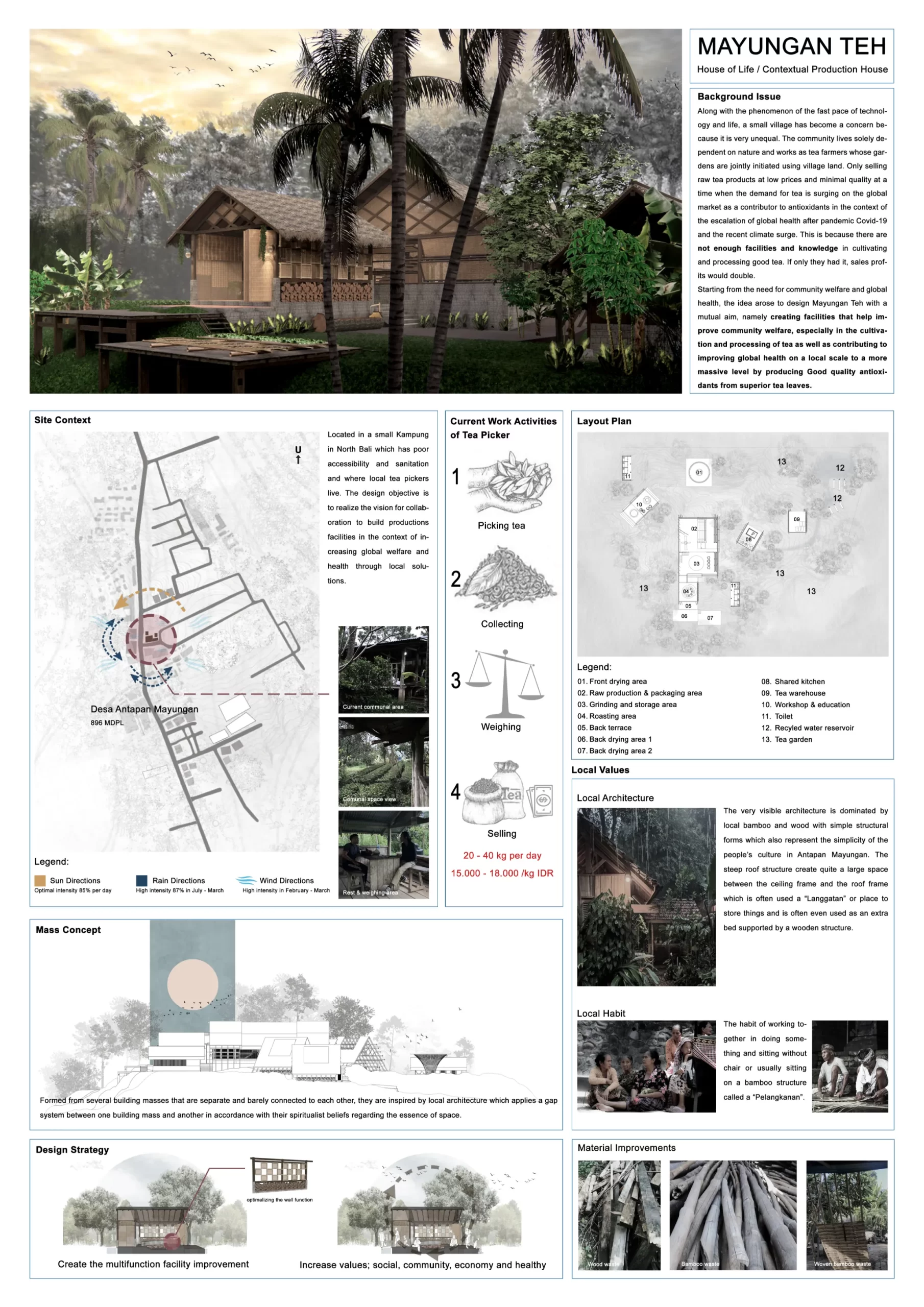

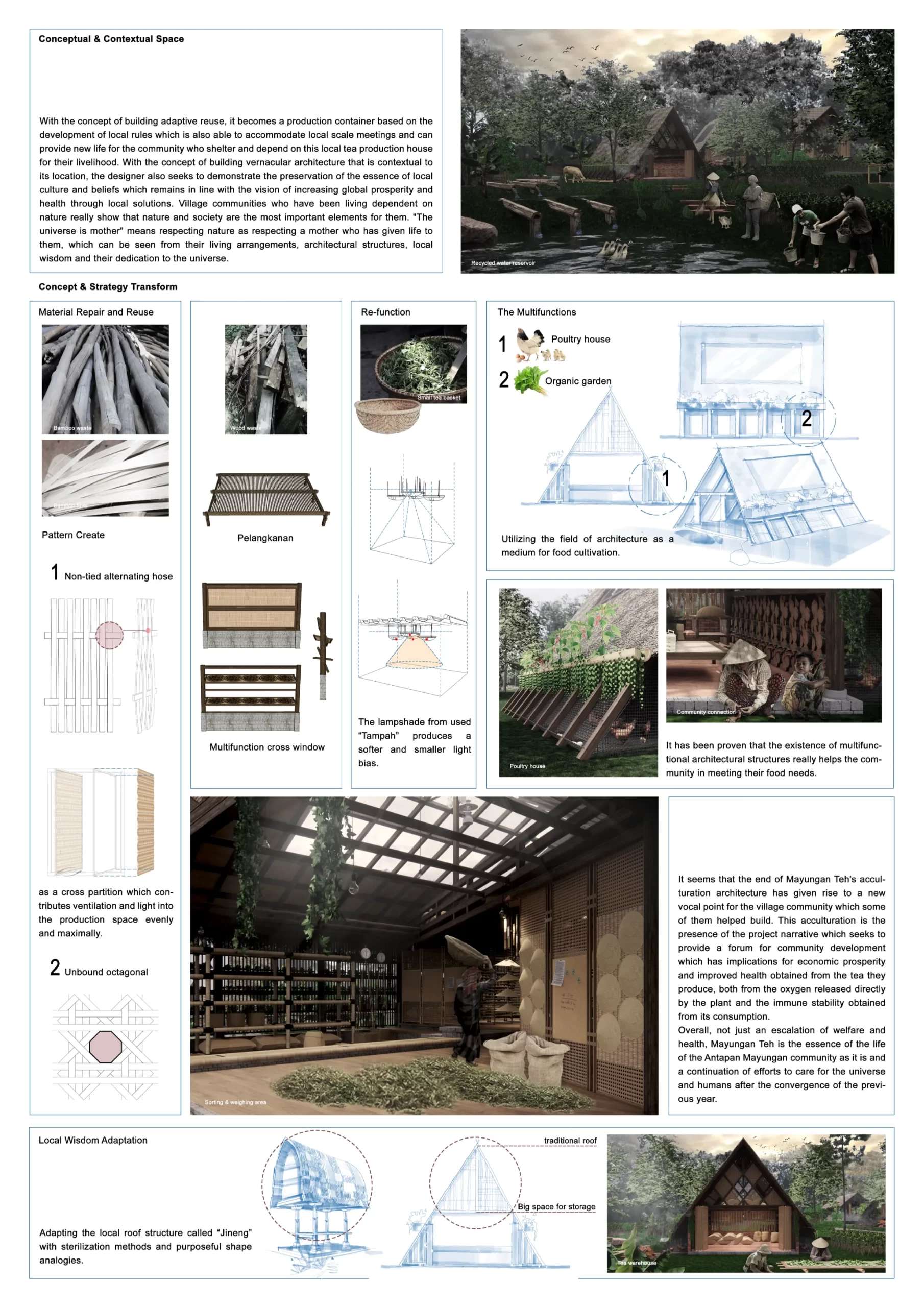
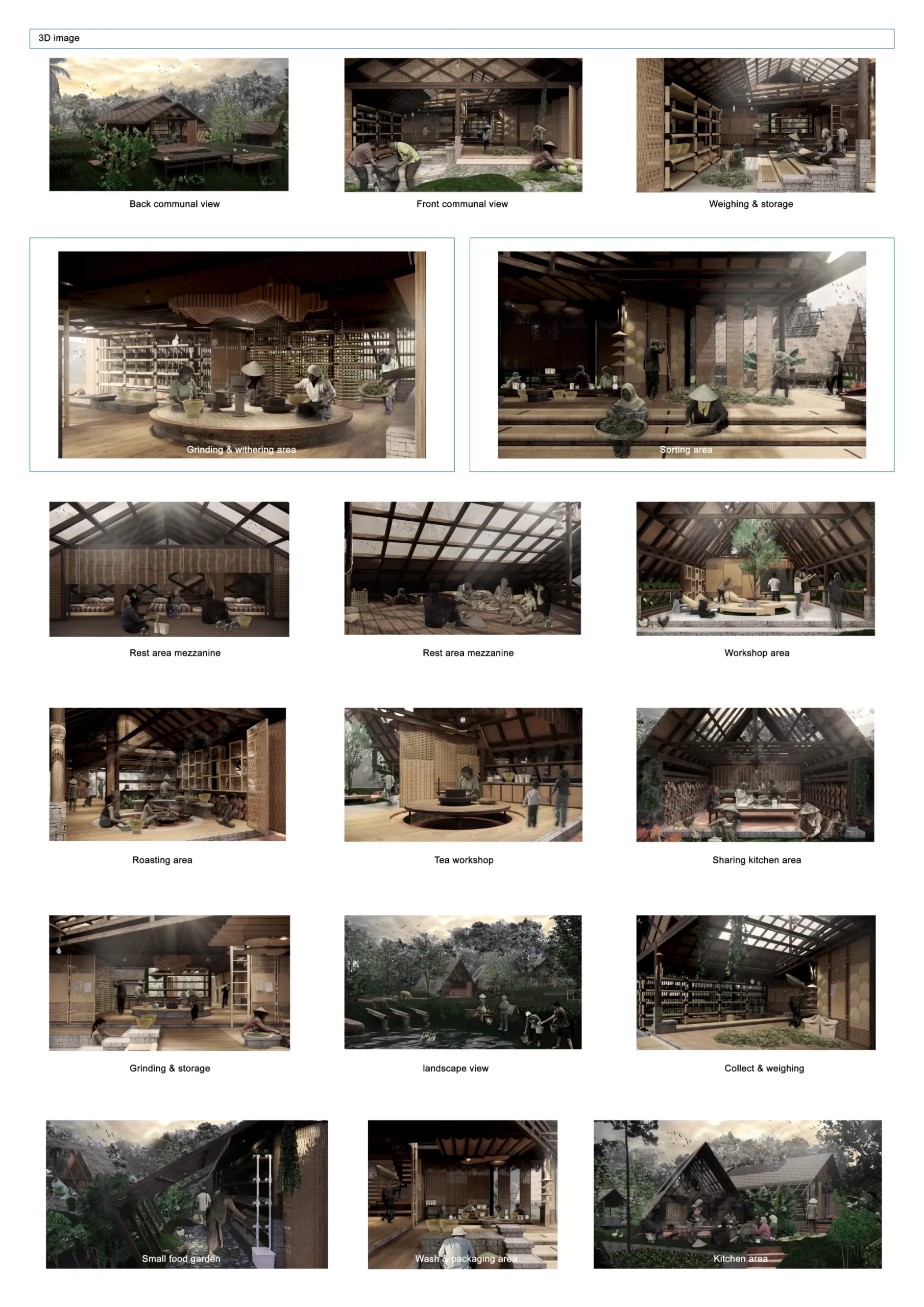
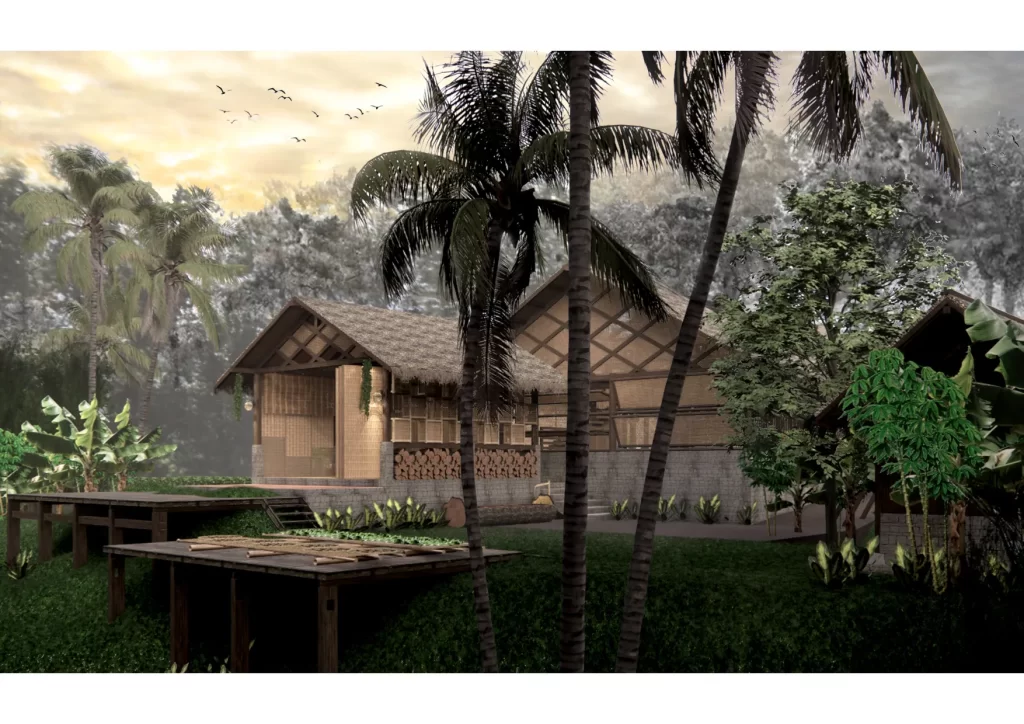
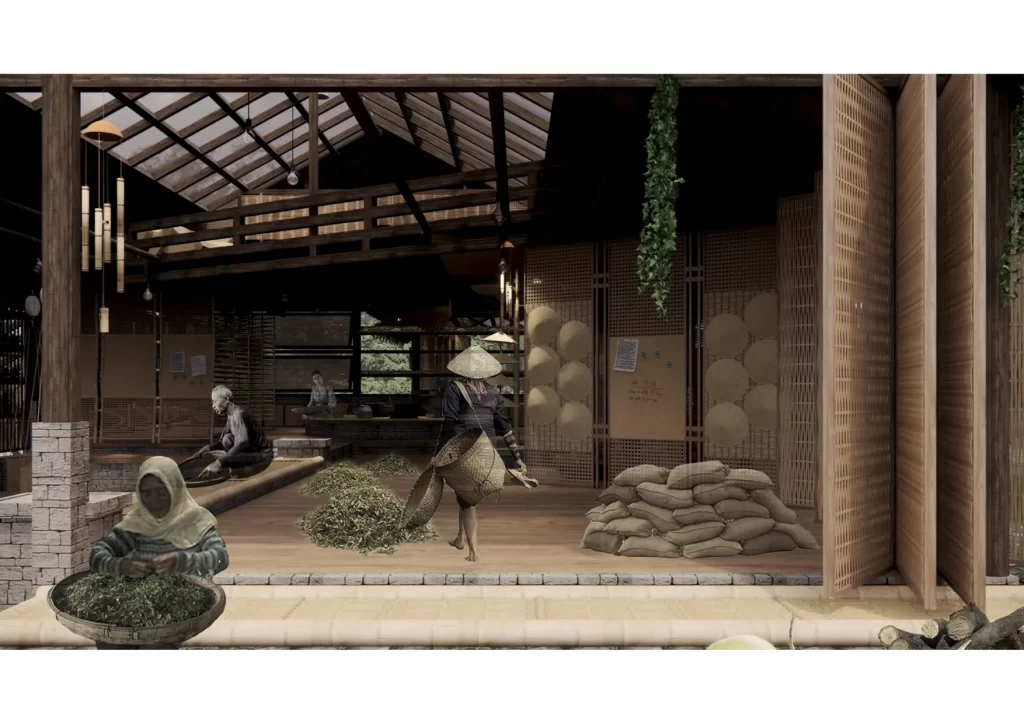
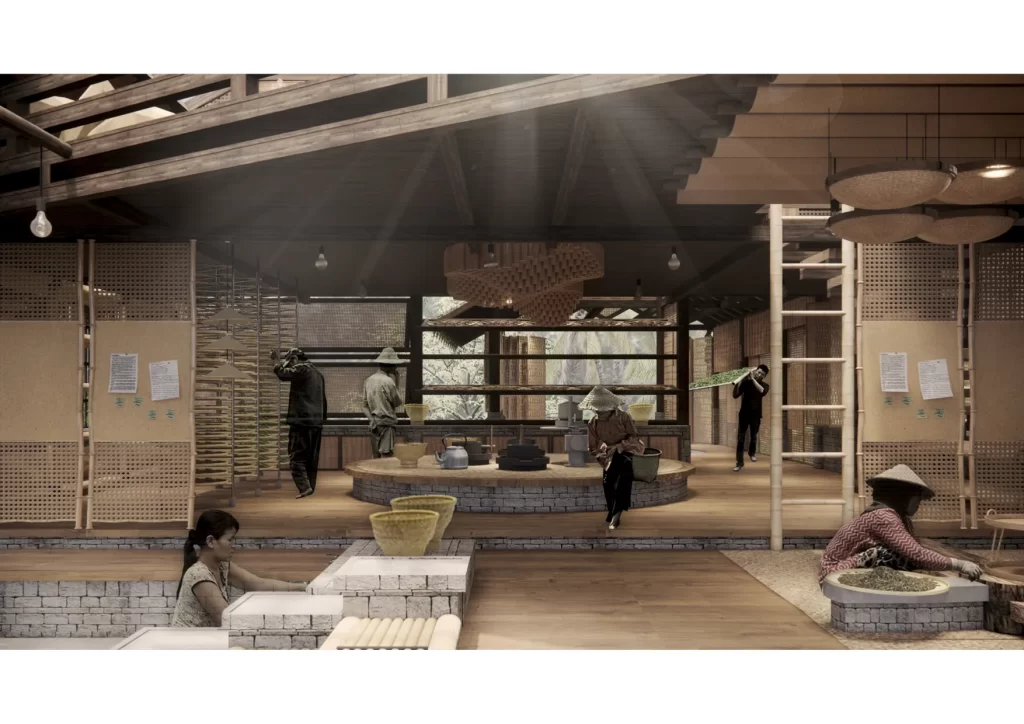
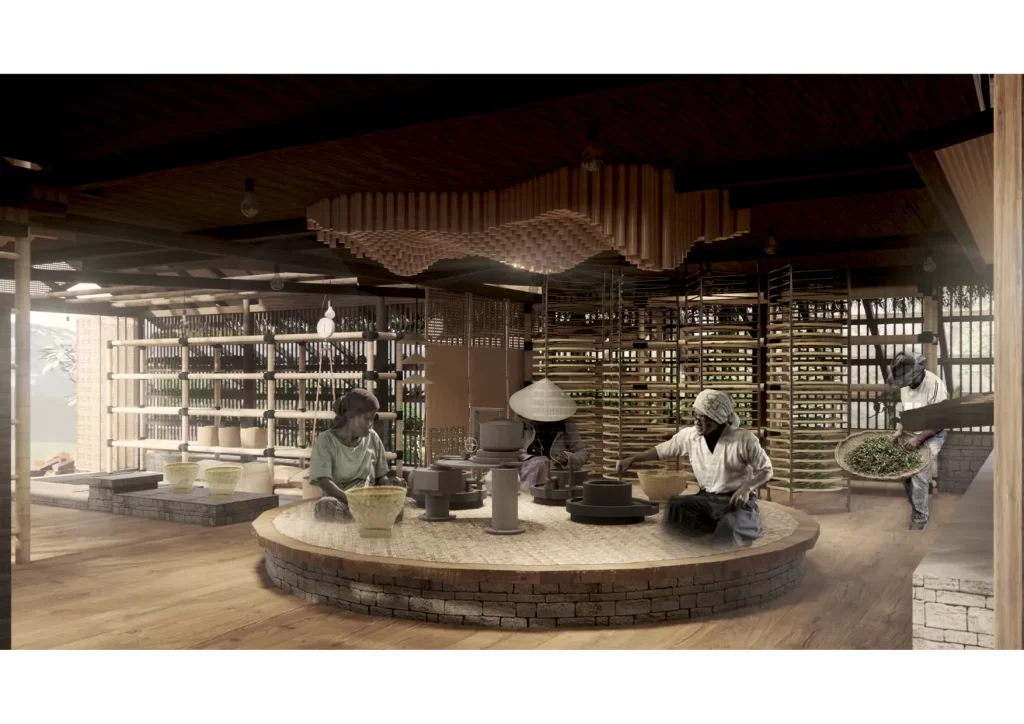
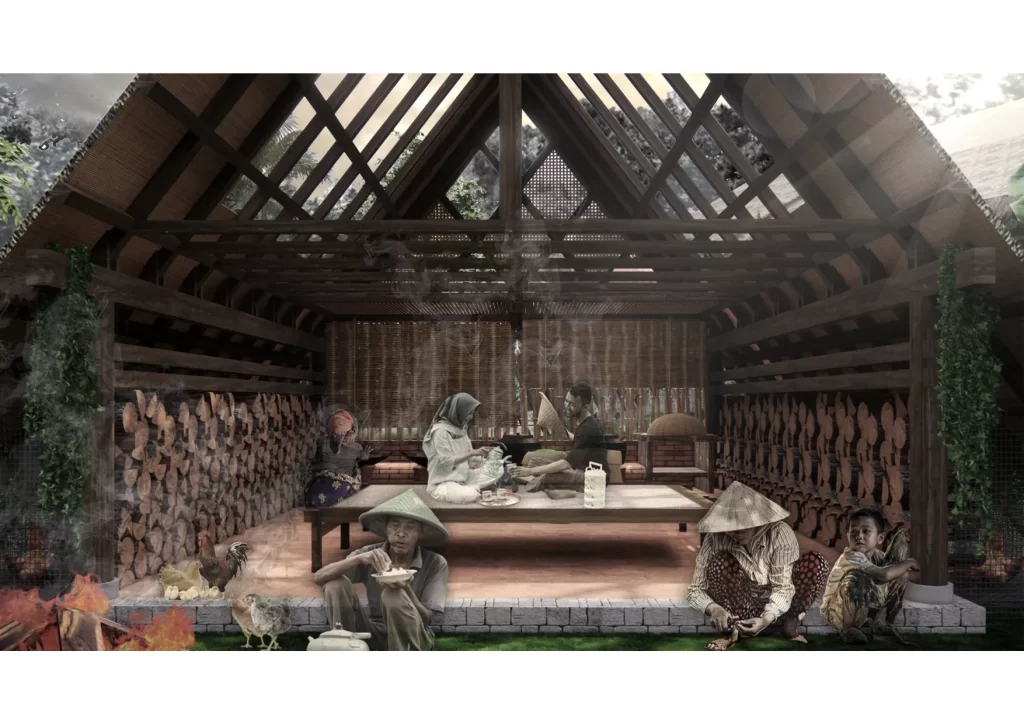
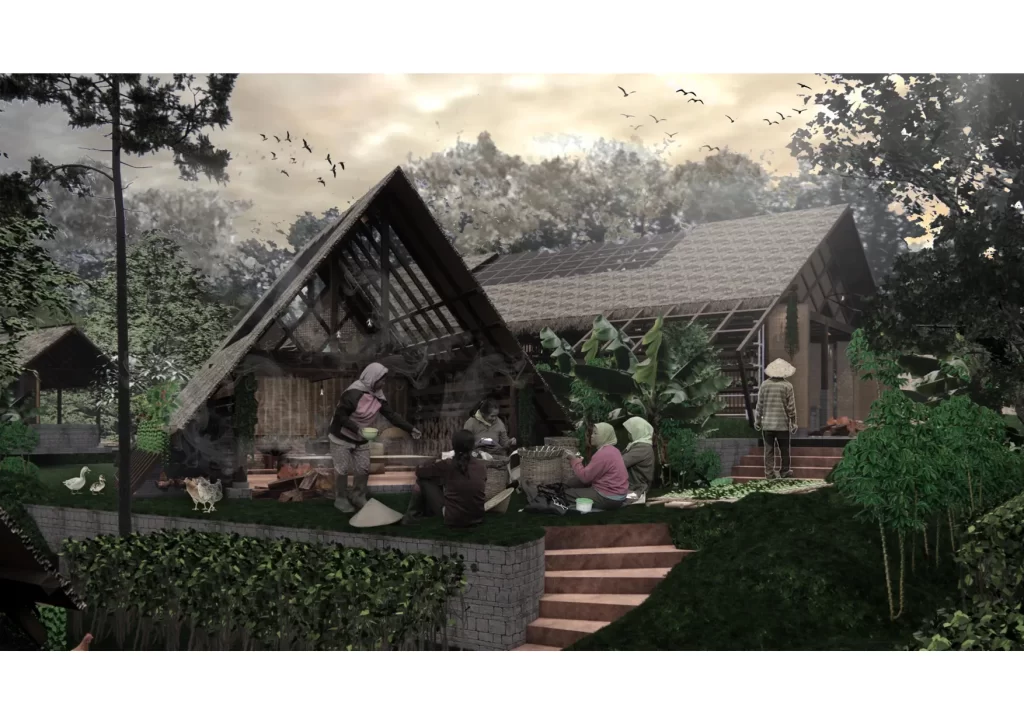
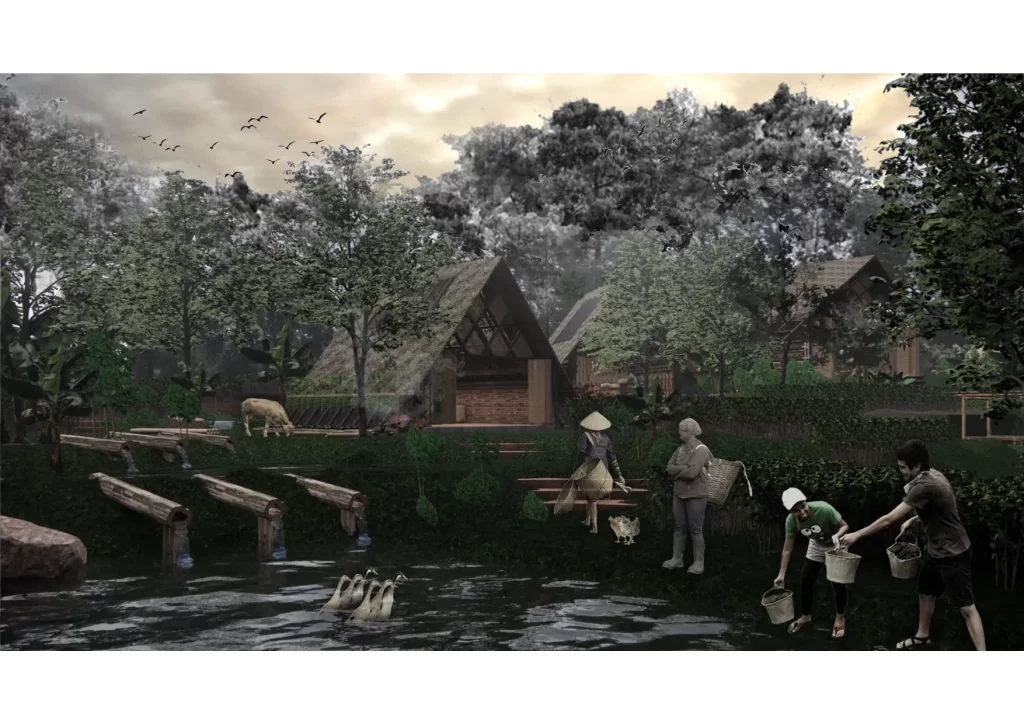

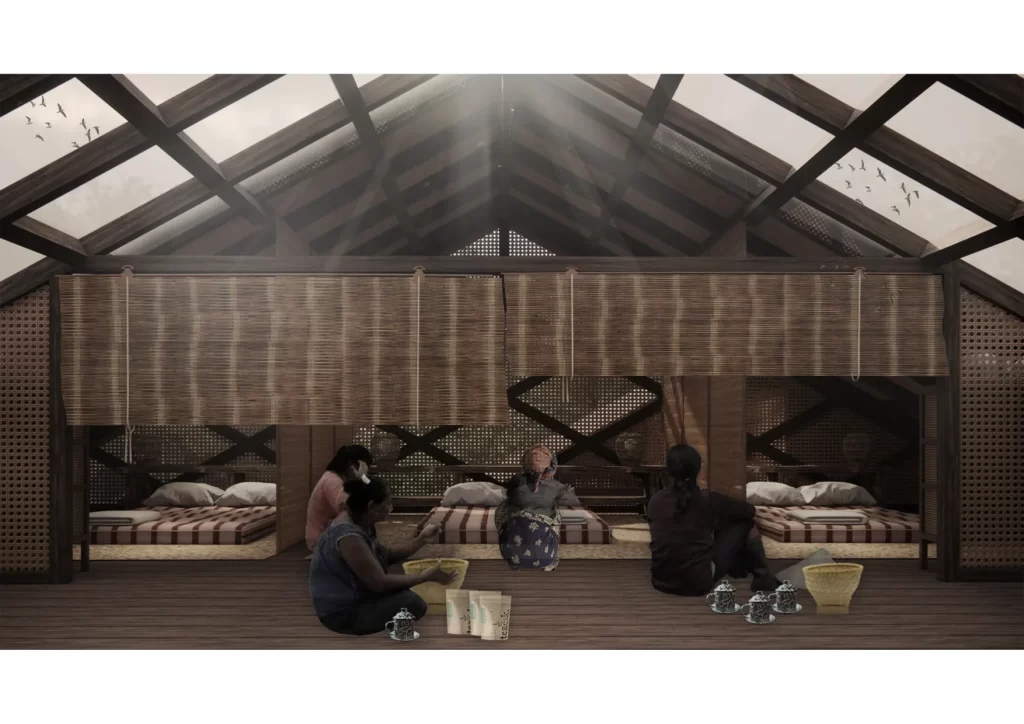
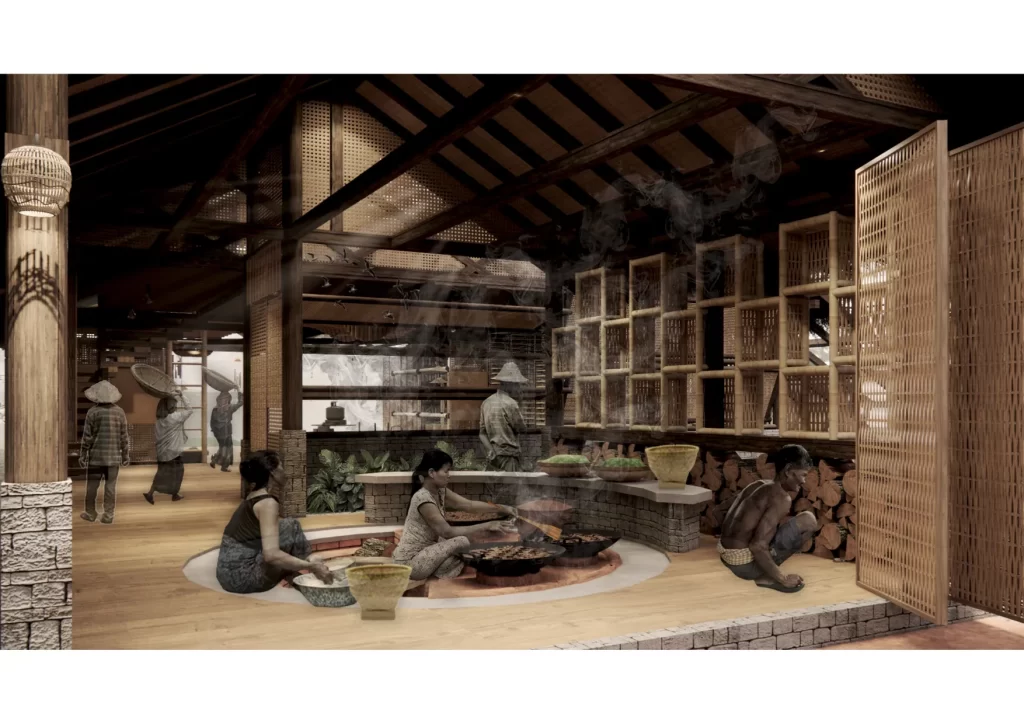
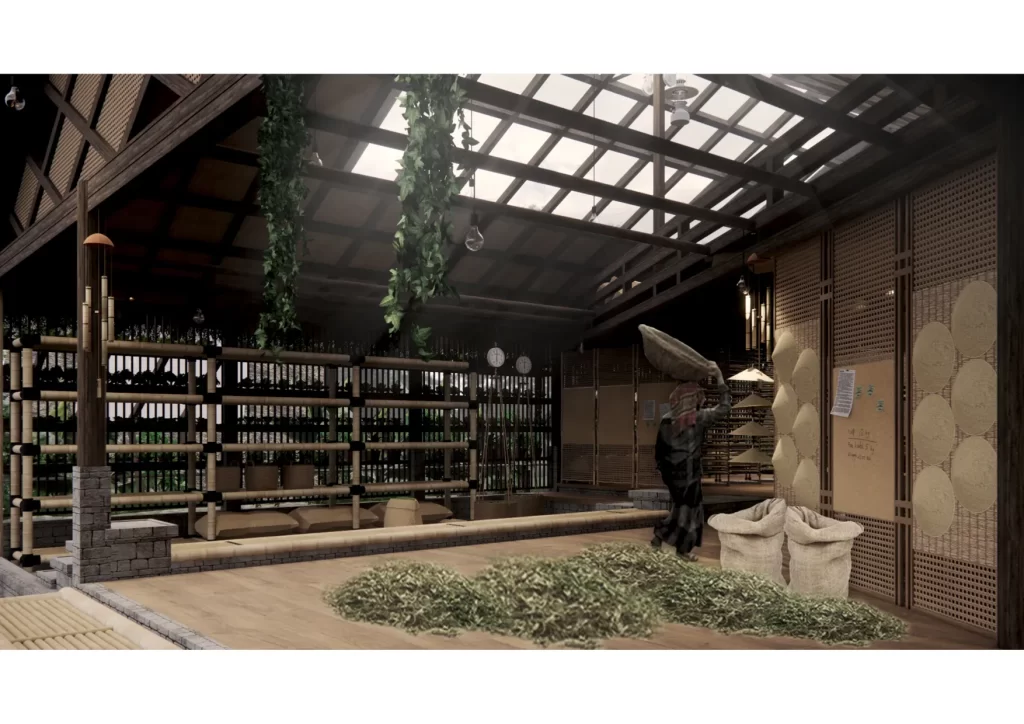
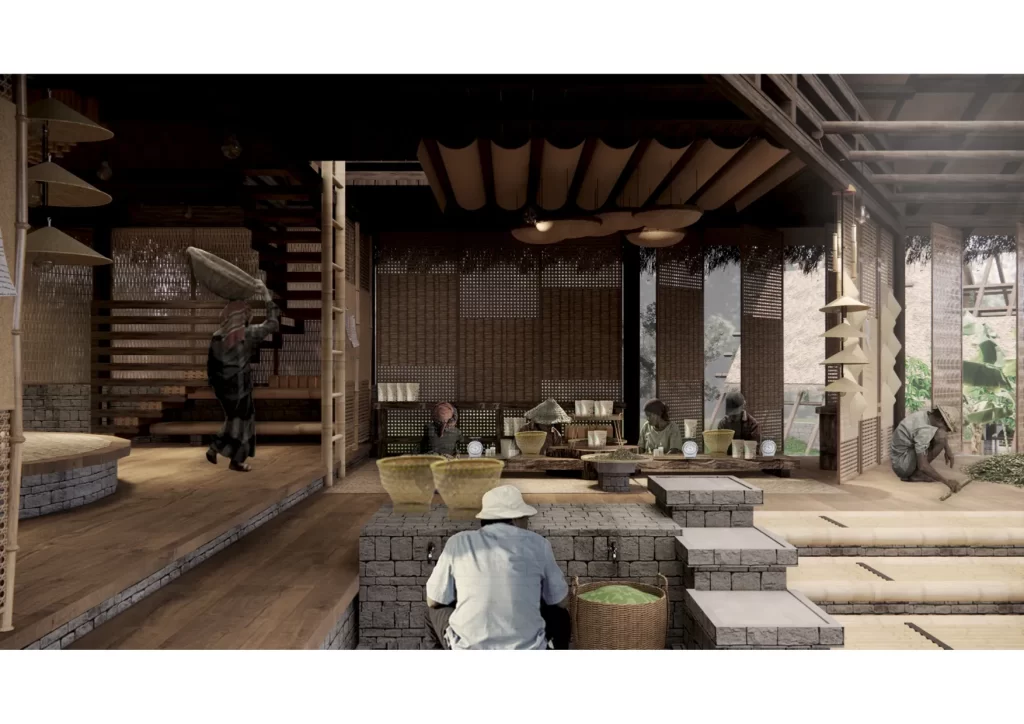
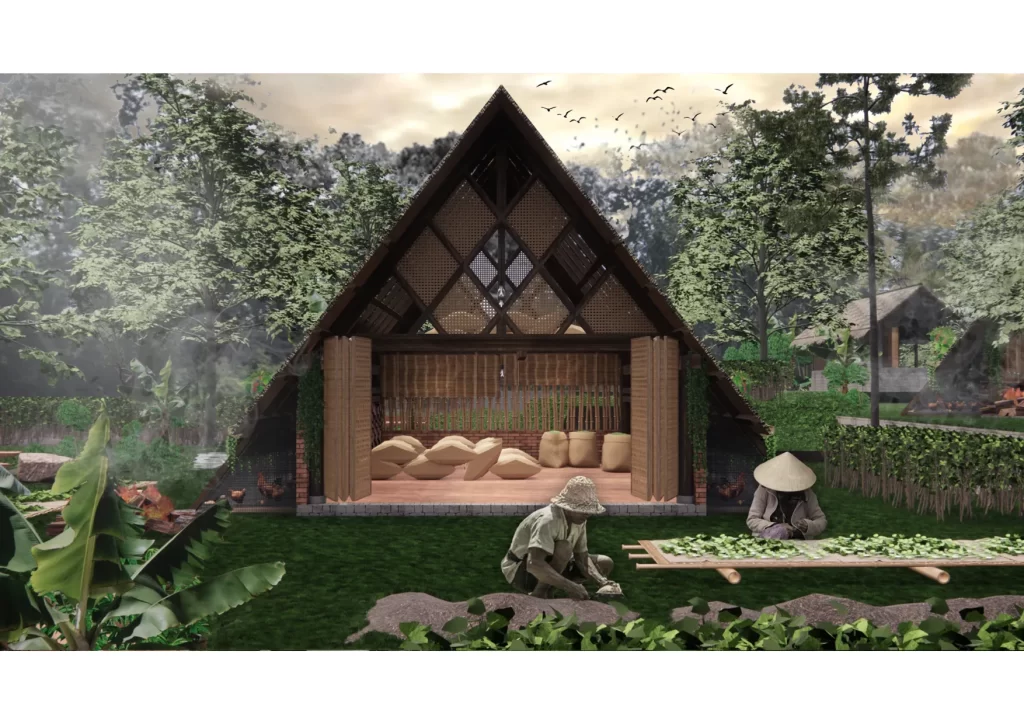
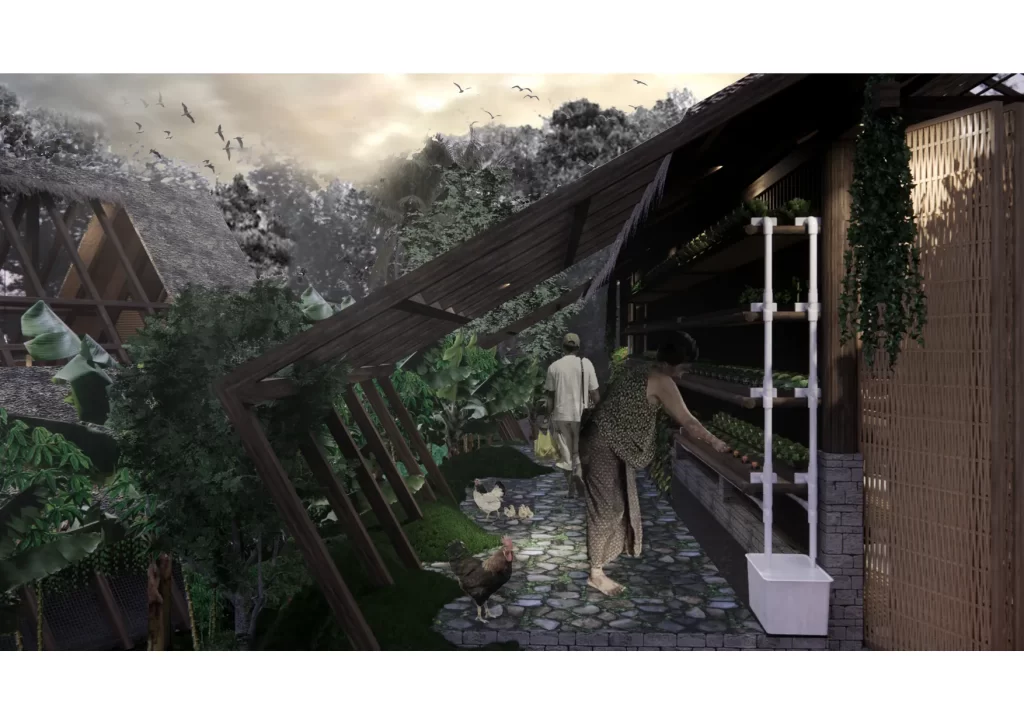
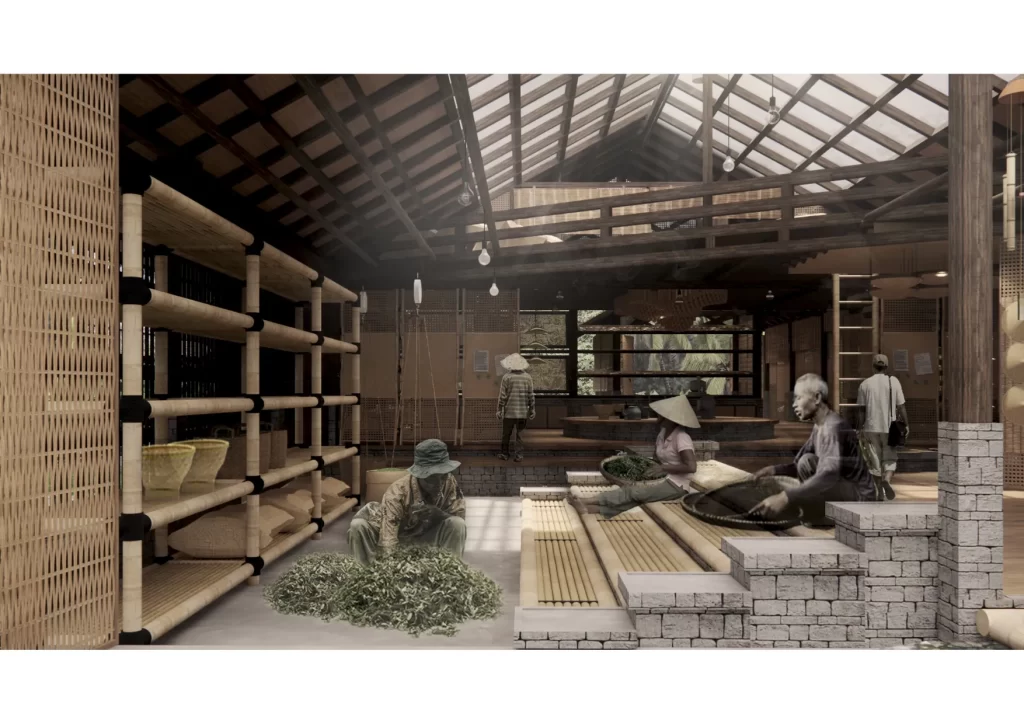
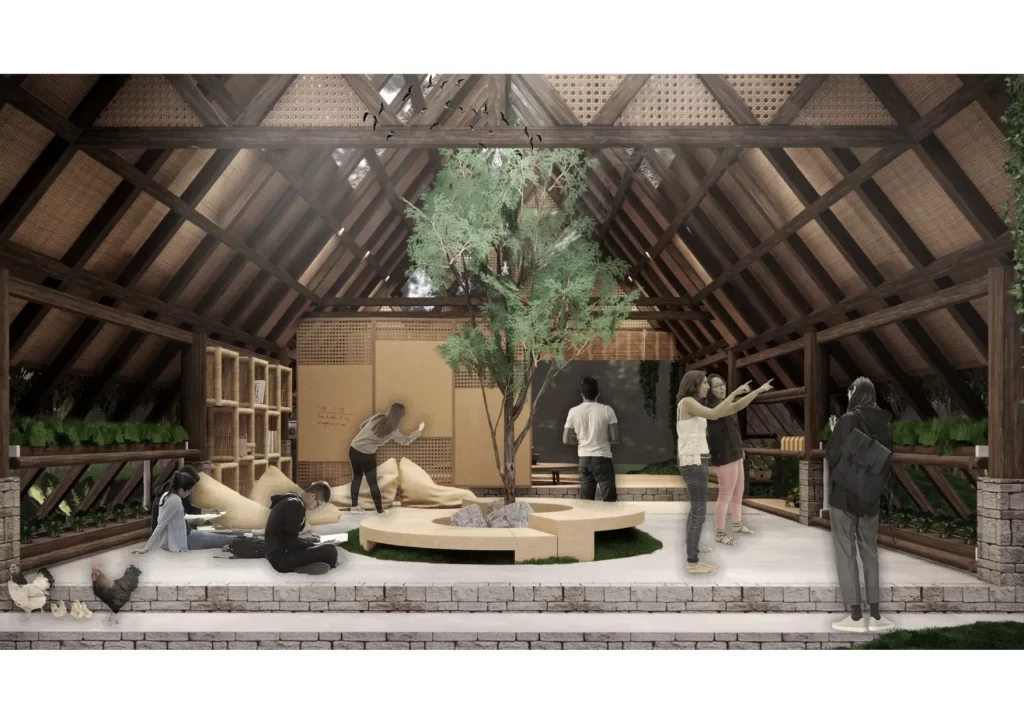
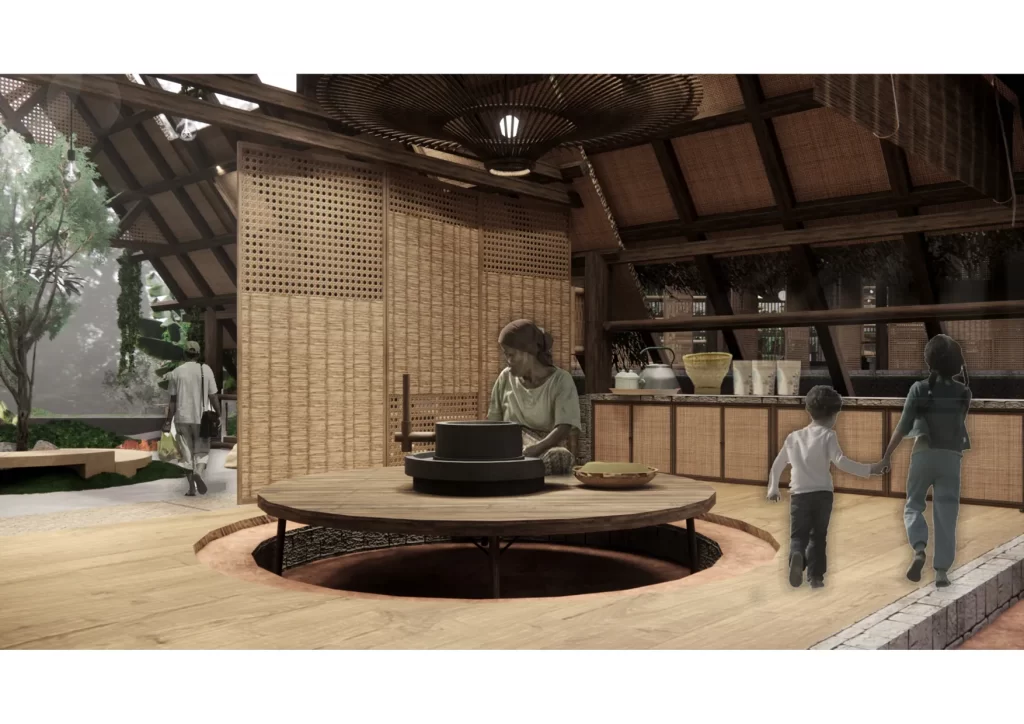
Showcase your design to an international audience
SUBMIT NOW
Image: Agrapolis Urban Permaculture Farm by David Johanes Palar
Top
MAYUNGAN TEH; HOUSE OF LIFE The global world is currently facing deep uncertainty due to the West War and Trade War which have had a massive impact on the stability of international trade where there has been a significant decline in economic growth which burdens world export-import contributors, including Asia. The plantation sector, especially the tea commodity, is the most affected sub-sector considering that is an important commodity and its existence is very broad and deep and has a close influence on the economy, culture and even health. This downturn has triggered severe social and economic inequality among world tea farmers, 70% of whom are small farmers in developing countries. My country, Indonesia, is one of the largest tea exporters in the world. However, the current phenomenon has resulted in inequality among tea farmers, especially Indonesia, all of whom live in remote villages and has become a very important problem and even world attention. And what I telling you now is about life in a remote village that produces tea leaves with sufficient quality and the people who initiated it. Antapan Mayungan, a small village in the hills of northern Bali with poor accessibility, sanitation and a crisis in the quality of human resources. The village community depends on nature and works on local tea plantations that are initiated together. In a day, the village community only produces 20-40 kg of raw tea leaves and only sell raw tea leaves at a low price and with mediocre quality. This is due to the lack of facilities and sufficient knowledge in cultivating and processing tea leaves. Apparently, tea continues to be a popular and in demand drink throughout the world because of its health benefits which then drives the rapid demand for tea in the global market. This should be a great opportunity for tea farmers, especially in Mayungan, in order to improve their standard of living and economy, and if only they could sell tea that has gone through a better processing process and quality, of course in the current conditions they can still sell or export tea even at a price twice as high as before.
Departing from the need for community welfare and global health, inspired me to design Mayungan Teh. The purpose of this design is to realize facilities that help improve the welfare of the community in cultivating and supporting the potential for good tea seed growth so that it can create new quality standards that are able to compete in the global market while maintaining its locality and essence as a cultural identity.
With the concept of adaptive reuse building which becomes a production house that is also able to accommodate local scale meetings and can provide new life for the community that depends on this local tea production house. The concept of interior space is created as a multifunctional space that prioritizes optimal functionality and ergonomics which then grows into a mutual space. The implementation of mutualism is woven into the roof structure which also functions as a hydroponic medium and has legs that function as a cage for laying poultry that can be consumed by the community and their droppings are used as fertilizer for tea plants in the garden itself. The walls also used as storage for firewood from the regeneration of tea plants which are then used to roast tea. Mayungan Teh is an energy-efficient building with a water recycling system, light exposure and natural ventilation sources that have implications for the health and efficiency of maintaining the architectural structure and its interior. Mayungan Teh is designed as the purest presence of the relationship between architectural structure and the universe that involves all elements of life. Utilizing the land as it is, maintaining the original land contour and maintaining the original landscape surrounded by trees.
The selected materials and color palettes reflect all the local elements in Antapan Mayungan. The design also maintains the durability of the material by perfecting it with Nippon Paint Woodstain and Nippon Paint Water Repellent Solution products for wooden surfaces and some cement floor/wall areas. Finally, Mayungan Teh becomes an icon of a global design solution that suggests that we as designers should take a role in providing solutions to global challenges, especially in tea commodities and establishing cooperation from Asia to the world to agree to meet certain quality standards in an effort to win the global market again starting from a local scale. I am sure that this is a starting point and its application is not only limited to my country, Indonesia, which has an inequality of tea farmers in each region, but also many countries in the world that have the same problems as Japan, which already has a tea drinking culture.
Mayungan Teh and the essence of its life.




















